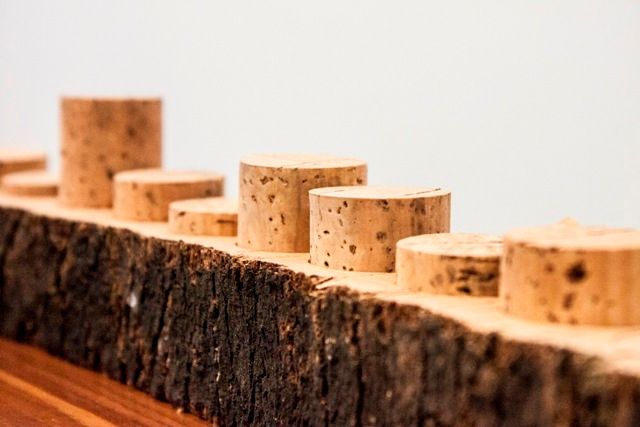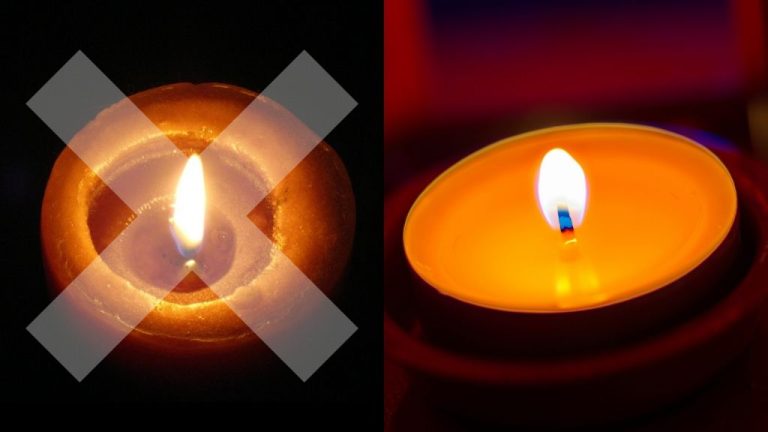Why Is My Candle Wax Melting?
Candle wax melting is a common phenomenon that occurs as a candle burns. When a candle is lit, the flame provides heat that melts the solid wax near the wick. This causes the wax to transition from a solid state to a liquid state. There are several key factors that contribute to candle wax melting, including the flame, wick, wax composition, room temperature, drafts, container size, burn time, and the proper wick size.
This article will examine these key factors and explain the science behind why candle wax melts as a candle burns. Understanding what causes the wax to melt allows us to better control the melting rate and burn time. With the right wick, wax, and burning conditions, we can achieve optimal melting and fragrance release from a candle.
Flame
The flame at the tip of the wick is what provides the heat to melt the wax in a candle. As the wick burns, it draws the liquid wax up via capillary action. The flame then vaporizes and combusts the wax to produce heat and light.
This heat transfer occurs through both conduction and convection. The hottest part of the flame is right next to the wick, so conductive heat transfer directly melts the solid wax. Convection causes hot air and gases from the flame to rise and circulate, heating and melting more of the wax around the wick.
The flame provides a concentrated heat source to melt wax immediately around the wick. This liquid wax is then drawn up the wick to fuel the flame. This allows the candle to burn continuously as the flame’s heat melts more solid wax into liquid fuel (https://candles.org/candle-science/).
Wick
The wick plays a crucial role in allowing a candle to burn. It acts as a conductor to bring the flame to the wax. The wick is made of fibers that are tightly braided or twisted together to form a piece of string or cord. Common materials used for wicks include cotton, paper, and wood (“what is a candle wick”, n.d.).
As the candle burns, the flame heats and melts the wax at the top of the wick. This liquid wax is then drawn up the wick by capillary action. Capillary action occurs due to the small diameter of the wick fibers creating adhesion and surface tension that pulls the liquid up (“What Makes a Candle Burn?”, n.d.). The wax travels up the wick until it vaporizes at the flame. This vaporized wax fuel feeds the flame to sustain the burning process.
Therefore, the wick plays an essential role through capillary action by delivering melted wax to the flame. Without the wicking action drawing up liquid fuel, the candle would not be able to burn.
Wax Composition
The type of wax used in a candle affects its melting point. Paraffin wax, which is derived from petroleum, has a melting point between 115-145°F. Soy wax, made from soybeans, melts between 115-135°F. Beeswax, which comes from honeycomb, has the highest melting point between 144-147°F.[1]
Paraffin wax is the most commonly used candle wax. It melts at a relatively low temperature, allowing the wax to liquify quickly and the fragrance to disperse when the candle is lit. The low melting point means paraffin candles are prone to melting in warm environments.[2]
Soy wax has a slightly lower melting point than paraffin, so it melts at a lower temperature. Soy wax is often blended with other waxes to raise its melting point. On its own, soy wax candles can lose their shape in warm conditions.
Beeswax has the highest melting temperature. Its high melting point means beeswax holds its shape better than other waxes. However, the higher melting point also means it requires more heat for the wax to melt and release fragrance when burning.
In summary, wax composition directly impacts the melting point. Paraffin melts quickest while beeswax requires the most heat. The type of wax used affects how prone a candle is to melting in warm environments.
Room Temperature
The room temperature has a significant impact on the rate at which candle wax melts. This is because the melting point for most candle waxes ranges between 75-180°F, which is close to standard room temperature. Even small fluctuations in room temperature can affect the melting rate if it brings the temperature closer to or further from the wax’s melting point.
For example, paraffin wax has a melting point of around 130°F. If the room is around 70°F, the wax will melt slowly. But if the room warms to 80°F, which is much closer to paraffin’s melting point, the wax will begin melting more rapidly. The same goes for cooler wax like soy wax, which melts at lower temperatures. Just a small rise from 70-75°F can drastically increase soy wax’s melting rate.
Therefore, pay close attention to room temperature if you notice your candle wax melting faster than expected. Lowering the thermostat just a few degrees can slow the melting rate. You can also move the candle away from heat sources that may be raising the local temperature. Monitoring room temperature is key to controlling the rate at which candle wax melts.
Drafts
Drafts and air currents can cause candles to melt unevenly and faster than expected by disrupting the heat zone around the flame.1 As the candle burns, the flame creates a zone of warm air around itself. This allows the wax to melt at an even pace up the candle. However, if there is an air current in the room, such as an open window, fan, or HVAC vent, it can push the warm air to one side. This makes the wax melt faster on that side, while the other side remains relatively solid. The uneven melting caused by drafts is called “tunneling.”

To prevent drafts from impacting candle burn times, avoid placing candles near vents, windows, doors, or anywhere they will be exposed to frequent air currents. Shielding candles from drafts helps maintain an even heat zone so wax melts evenly down the candle.2 A draft-free area allows the wax to melt at the expected pace based on the size and composition of the candle.
Container Size Matters
The size of the container holding the candle wax plays an important role in how quickly the wax melts. This is because of how heat dissipates in differently sized containers.
Smaller containers concentrate the heat from the flame, allowing less area for the heat to dissipate. The wax is closer to the flame so it receives more direct heat. The small surface area also provides less opportunity for heat to dissipate outwards into the air.
In comparison, larger containers allow more space for the heat to spread out. The wax is farther from the direct heat of the flame. More surface area also enables faster heat transfer outwards rather than being concentrated on the wax.
The limited heat dissipation in a small container accelerates melting. Meanwhile a larger container causes wax to melt slower due to increased heat dispersion. Container size is a key factor in the rate of melting.
Burn Time
The burn time of a candle affects how much wax melts during the duration it is lit. Longer burn times lead to more wax melting compared to shorter burn times. Generally, natural waxes like soy and beeswax have longer burn times than paraffin wax. For example, soy candles can burn anywhere from 20-85 hours depending on the size, while paraffin candles may only burn for 5-15 hours (Source 1). The longer a candle burns, the more time it has to melt the wax. During an extended burn time, the melted wax pool can reach all sides of the container, using up more wax in total. Short burn times may only melt wax in the center and not reach the edges before the candle is extinguished. Choosing the proper wick size to support the desired burn time can help maximize wax usage for the candle’s intended purpose.
Proper Wick
Selecting the proper wick size for your candle is crucial to minimize issues like tunneling, mushrooms, and sooting. The wick must be wide enough to form a proper melt pool for complete wax consumption, but not so wide that it allows for excessive melting. Generally, wider candles require wider wicks to maintain an appropriate melt pool. However, wick sizing depends on both your container diameter and wax type.
For soy wax candles 3.5″ diameter or less, medium-sized wicks like CD-8 work well, according to this source. In containers 3.8″ or wider, a double wick may be required for an even melt pool. Beeswax candles also need thicker wicks due to the heavier wax consistency. Refer to manufacturer guidelines for eco-friendly wick sizing in beeswax or soy.
Test different wick sizes in your chosen container and wax to find the best option. Adjusting your wick will help maximize your candle’s burn time and create an even melt pool without issues.
Conclusion
Candle wax melts and burns properly when the right balance of flame, wick, wax composition, room temperature, airflow, and container size come together. The wax needs to be heated to its melting point by the flame in order to liquify and travel up the wick. If the room is too cold or there are drafts, the wax may harden before reaching the wick. The wick also needs to be the proper width to sustain the flame – too wide and it causes smoking, too narrow and the flame will be weak. Harder waxes like paraffin have higher melting points than softer waxes. The candle holder size matters too – large containers need bigger flames and wider wicks to generate enough heat to melt all the wax. By understanding these key factors, you can troubleshoot candle issues and achieve ideal wax pooling and burning.






